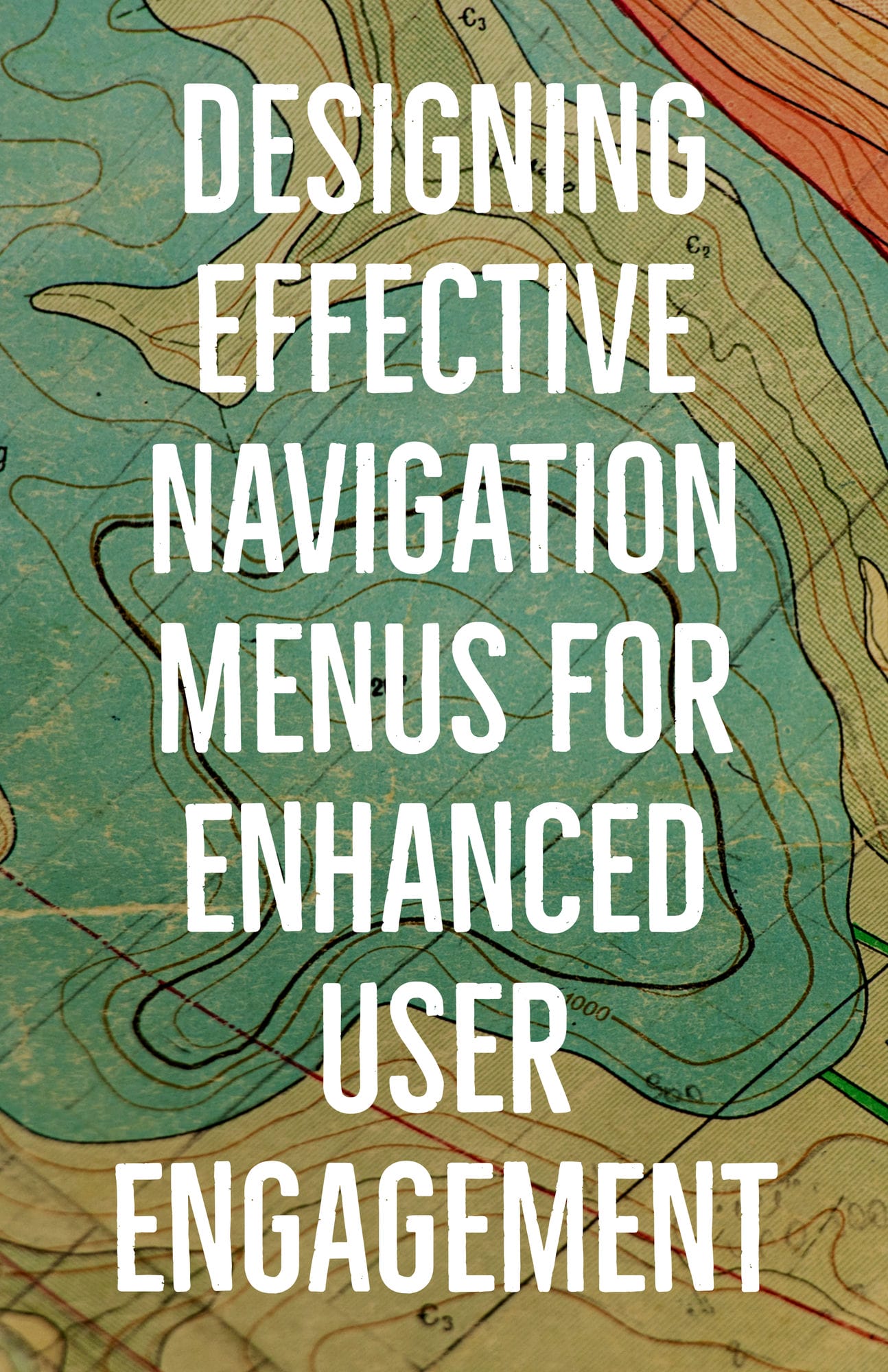
Navigating through a website should be an intuitive and seamless experience for users. A well-designed navigation menu plays a critical role in ensuring that visitors can easily find the information they’re looking for, ultimately leading to higher user engagement and increased conversions. In this article, we’ll discuss the importance of effective navigation menus, share best practices for designing them, and provide examples of successful implementations.
The Importance of Navigation Menus
Navigation menus are essential components of any website, as they serve as the primary means for users to explore the site’s content. A well-structured navigation menu helps users understand the overall layout of your website, making it easier for them to locate the information they need.
When users have a positive experience navigating through your site, they are more likely to engage with your content, spend more time on your site, and eventually convert into customers or subscribers. On the other hand, a poorly designed navigation menu can lead to user frustration, high bounce rates, and lost opportunities.
Best Practices for Designing Effective Navigation Menus
To create a user-friendly navigation menu that enhances user engagement, consider the following best practices:
1. Keep It Simple and Intuitive
A navigation menu should be simple and easy to understand. Avoid using jargon or industry-specific terms that may confuse users. Instead, use clear, concise labels that accurately describe the content of each page or section.
Additionally, strive to limit the number of items in your main navigation menu. Too many options can overwhelm users and make it difficult for them to find what they’re looking for. As a general rule, aim for no more than seven items in your main menu.
2. Organize Items Hierarchically
Organize your navigation menu items according to their importance or relevance to users. Place the most important or frequently accessed items towards the beginning of the menu, as users typically scan menus from left to right.
Use submenus or dropdowns for secondary or tertiary pages that fall under a broader category. This hierarchical structure helps users understand the relationship between different pages and allows them to drill down into more specific content.
3. Make It Responsive and Mobile-Friendly
With the increasing use of mobile devices to access the internet, it’s essential to design navigation menus that adapt to different screen sizes and devices. A responsive navigation menu should be touch-friendly and easy to use on small screens.
Consider using a “hamburger” menu icon (the three horizontal lines) for mobile devices, which expands into a full menu when tapped. This conserves screen real estate while still providing users with access to your site’s primary navigation.
4. Highlight the Current Page or Section
To help users understand where they are within your site, highlight the current page or section in the navigation menu. This visual cue can be achieved using a different color, font weight, or background for the active item.
This simple design choice not only enhances usability but also reinforces your site’s visual hierarchy, helping users maintain a clear understanding of their location within your content.
5. Ensure Consistency
To ensure that users have a consistent experience navigating through your site, maintain the same structure and styling across all pages. This consistency will help users recognize familiar elements as they move from page to page, providing them with a sense of orientation within your content.
Wrap up
By following the best practices outlined above, you can create a navigation menu that is both user-friendly and visually appealing. Keep menus simple and intuitive by using clear labels for each item; organize items hierarchically to show relationships between pages; make sure your menu is responsive and mobile-friendly; highlight the current page or section in the navigation menu; and ensure consistency across all pages. When designing effective navigation menus, these principles will help you deliver an engaging experience that drives users deeper into your content while keeping them informed of their location within your website.
Are you looking for an effective way to drive engagement and user loyalty to your website? Hire Graticle to help you create a navigation menu that is simple, intuitive, and optimized for mobile devices. Our team of experts understands the importance of visual hierarchy and can develop a menu that follows the best practices outlined above while keeping your site’s unique design and branding in mind. Contact us today to get started! Call (360) 450-3711
Graticle Design is a professional web design company located in Longview, Washington. Our team of experienced developers understands the importance of visual hierarchy, ensuring that users have an engaging experience while navigating through your content. We strive to provide high-quality designs that are tailored to each client’s unique needs, from simple static sites to more complex dynamic applications. With Graticle Design, you can be sure that your website’s navigation menu will follow the best practices outlined above, driving engagement and user loyalty to your content.





